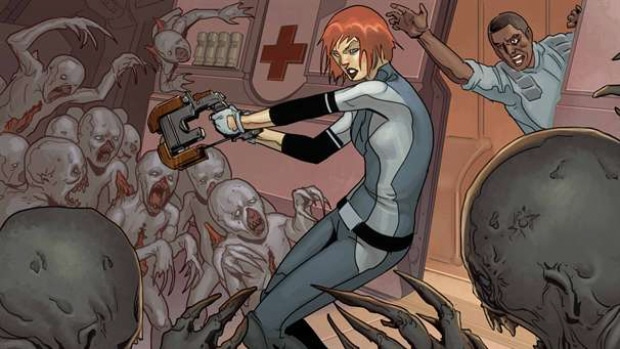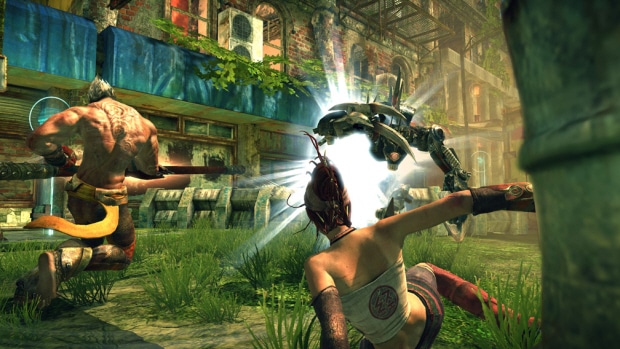
Synopsis:
Dead Space: Ignition is a downloadable game (available on Xbox Live and Playstation Network) and serves as an introduction to the events of the upcoming sequel Dead Space 2. You play as an engineer on a ginormous space station called The Sprawl during a necromorph breakout. The events start innocently enough as you start your day repairing various engineering problems around the city accompanied by your law enforcement partner/lover. However, all hell breaks loose once the monsters come out from the closet and you start receiving communiques from a mysterious stranger that twists the plot at the end and closes with a great segue into the beginning of Dead Space 2.
Gameplay:
DS:I is more accurately classified as an 'interactive comic' by the developers, and this is right on the money. The majority of your time is spent watching animated comic cels and watching the story unfold. These 'cutscenes' are interspersed with 3 different mini-games which serve as a representation of your engineer's attempts at repairing various systems throughout the Sprawl.
Trace route is essentially a racing game which pits you against other programs in a race to get to the finish line first. You have several different weapons at your disposal: speed boost, blocks that slow your opponent and viruses that invert either yours or your enemies controls.
Hardware crack is your typical 'guide-the-colored-light-to-the-node' game that gives you several different types of refractory tools to change the direction of lasers into the same colored goal point.
System override is a tower defense type game, except in this instance you are the attacker. You have a few different types of 'viruses' to infect the computer program and win the game.
The mini games are all well done, but aren't anything that hasn't been seen in other, better games. The best part of DS:I is the fleshing out of the events that lead up to Dead Space 2. You also unlock a unique suit for Isaac in DS2 by completing the game.
Repeat playthroughs are encouraged as there are several points in the game that force you to make a decision as to which place to go to next. Once you make that decision, the non-chosen branch is closed off for the remainder of that playthrough. Thankfully, a playthrough is relatively short (there's an achievement for completing on in less than 25 minutes), so playing through 4 times shouldn't be too much of a chore for the completionists out there.
Design:
The design of the game is average at best. While the art is not the greatest, it didn't offend me as much as other folks have been reporting. You can see from the attached pics that it's definitely going for a very stylized comic look, which is okay when the images are still, but when they 'come to life' as it were, they tend to look a bit like Major Arnold Toht.
There's not much to talk about gameplay as it's very straightforward. I will say that the Trace Route mini-game was the most angst-inducing of the 3 for me as it really requires fast reflexes and some memorization of the best routes in order to beat your enemies to the finish line. One of the early ones got me to shut down the game and forget about it for a couple of days before returning to finish it. Strangely enough, the following trace routes were much easier, and I can't decide if the difficulty spiked in the early portion of the game and tapered off, or if I just got accustomed to the game play and improved my own performance.
Summary:
Dead Space: Ignition is not a great game, but is a fun way to expand your experience in the Dead Space universe. Much like No Known Survivors, Dead Space: Downfall and the Dead Space Comics, this serves to give fans a deeper story behind the events of the main game. If you're planning on getting Dead Space 2 no matter what, I would say pre-order the game to get a free copy of Ignition included and save yourself the space bucks it would cost to buy it stand alone.
Score: 5/10




